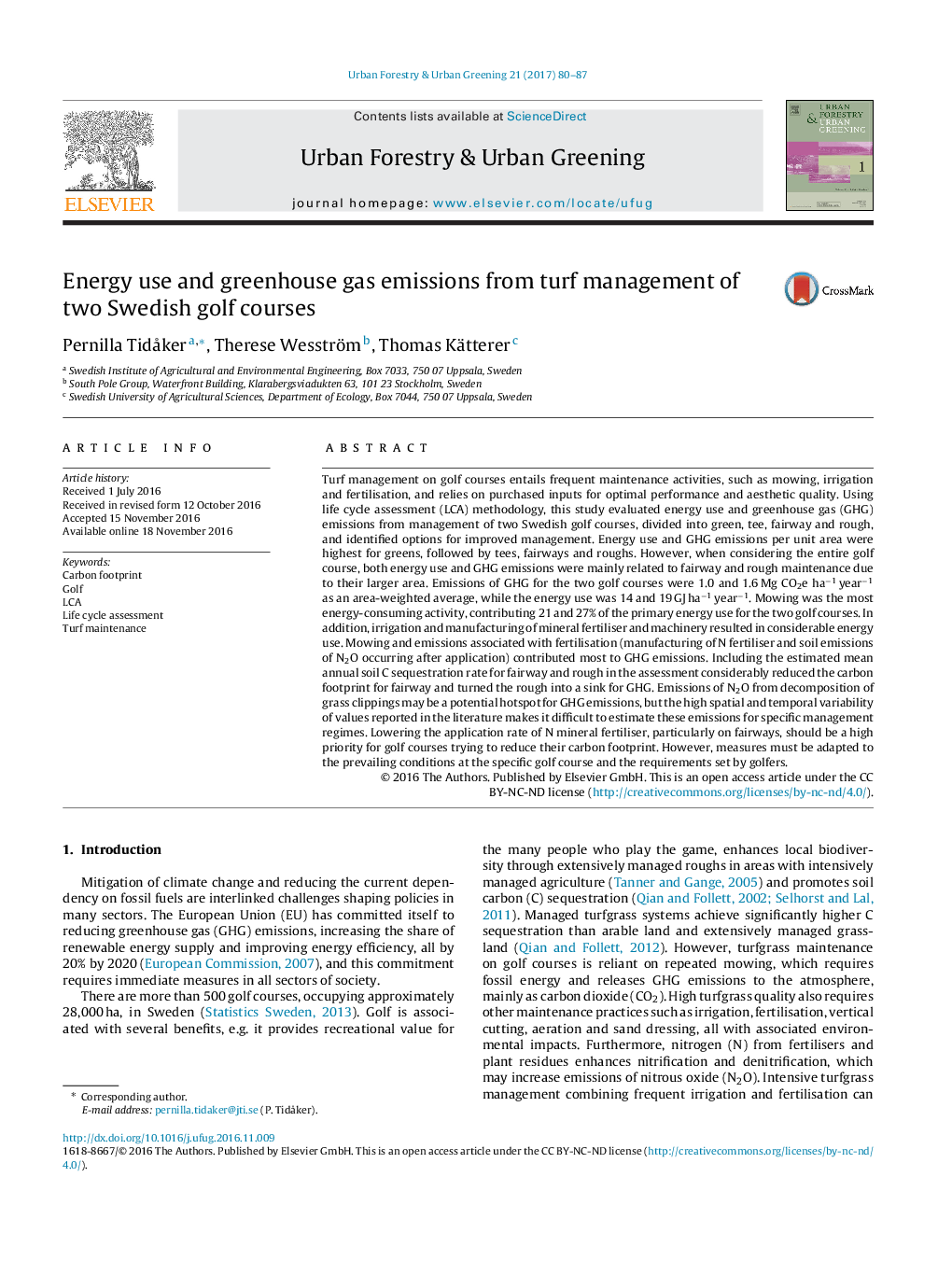| کد مقاله | کد نشریه | سال انتشار | مقاله انگلیسی | نسخه تمام متن |
|---|---|---|---|---|
| 6461632 | 1421869 | 2017 | 8 صفحه PDF | دانلود رایگان |
- Golf course management was evaluated using life cycle assessment.
- Mowing was the most energy-consuming activity.
- Lowering N fertiliser rate is important for reducing greenhouse gas emissions.
- Soil C sequestration considerably reduced carbon footprint.
Turf management on golf courses entails frequent maintenance activities, such as mowing, irrigation and fertilisation, and relies on purchased inputs for optimal performance and aesthetic quality. Using life cycle assessment (LCA) methodology, this study evaluated energy use and greenhouse gas (GHG) emissions from management of two Swedish golf courses, divided into green, tee, fairway and rough, and identified options for improved management. Energy use and GHG emissions per unit area were highest for greens, followed by tees, fairways and roughs. However, when considering the entire golf course, both energy use and GHG emissions were mainly related to fairway and rough maintenance due to their larger area. Emissions of GHG for the two golf courses were 1.0 and 1.6Â Mg CO2e haâ1Â yearâ1 as an area-weighted average, while the energy use was 14 and 19Â GJÂ haâ1Â yearâ1. Mowing was the most energy-consuming activity, contributing 21 and 27% of the primary energy use for the two golf courses. In addition, irrigation and manufacturing of mineral fertiliser and machinery resulted in considerable energy use. Mowing and emissions associated with fertilisation (manufacturing of N fertiliser and soil emissions of N2O occurring after application) contributed most to GHG emissions. Including the estimated mean annual soil C sequestration rate for fairway and rough in the assessment considerably reduced the carbon footprint for fairway and turned the rough into a sink for GHG. Emissions of N2O from decomposition of grass clippings may be a potential hotspot for GHG emissions, but the high spatial and temporal variability of values reported in the literature makes it difficult to estimate these emissions for specific management regimes. Lowering the application rate of N mineral fertiliser, particularly on fairways, should be a high priority for golf courses trying to reduce their carbon footprint. However, measures must be adapted to the prevailing conditions at the specific golf course and the requirements set by golfers.
Journal: Urban Forestry & Urban Greening - Volume 21, January 2017, Pages 80-87
